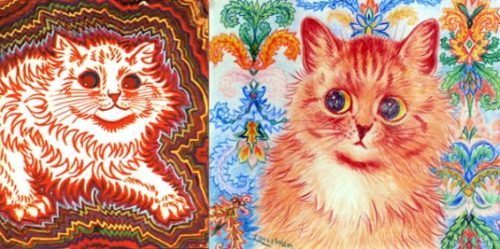
By most measures, the world seems to have become a more empathetic place since the Stone Age. The average person’s chances of meeting a violent end are far lower today than back then, and one’s exposure to grossly traumatic events are also far lower. This has had some interesting effects for a species that may have adapted to a certain level of environmental violence.
In many ways, this increasing empathy is becoming standardised and expected. We are more empathetic than ever before by a number of measures: we share more of our wealth than ever, we commit fewer crimes against each other than ever, we have a much better understanding of mental illness than ever. We debate social issues – like bringing refugees into the country to be supported out of general taxation – that would have been unthinkable even a century ago.
The question arises: where does this process end? In my upcoming cyberpunk novel, The Man With A Thousand Fathers, I explore this point in some detail. It is set in the 2080s, when the science of psychology is much more advanced than what it is today and when the confluence of virtual reality and psychoactive research chemicals has meant that the world on the flipside is often realer than this one.
In the Thailand of the story world, children who are discovered to have defective levels of empathy are put into a virtual reality environment instead of being allowed to go into real life, and then raised with exposure to a set of stimuli specifically calculated to condition them to be more civil. One of the story’s characters, an orphan named Suwat, spends over a decade in such a virtual environment before being released.
It’s entirely possible that such a thing may eventuate, for utilitarian reasons. It’s not difficult to predict the kinds of children who are going to grow up to be criminals. They’re simply the kids that lack empathy for other kids. Any schoolteacher could tell you with high accuracy which children in their class are likely to grow up to cause problems and which children are not.
It’s also not difficult to predict why these kids lack empathy. The vast majority of the time it’s because they themselves aren’t shown empathy at home. Children are not born knowing what’s what; they learn to base their behaviour and moral values on what is demonstrated to them as normal. If a child’s parents don’t show empathy to each other or to that child, that child might well grow up to learn that not showing empathy is normal.
A child who has been exposed to really bad things might even come to learn that empathy is weakness that makes a person vulnerable. They might learn that showing empathy is a signal that one is soft, and that one dare not show it in case it invites aggression and exploitation.
With advancing virtual reality technology, we’re almost at the point where using a virtual environment for therapeutic purposes becomes mainstream. Virtual reality therapy has already shown promise in treating soldiers suffering from PTSD.
Extrapolating from this, it might become possible, if a virtual environment was engineered accurately enough, to use VR therapy to cure a wide range of psychiatric illnesses and disorders.
On the darker side, advancing technology might also make it possible for psychotechnicians to use machines to measure aspects of brain activity that the owner of the brain might not themselves be aware of. It has been possible to detect homosexuality in a subject for decades by exposing them to graphic homosexual images and measuring whether certain parts of the brain spark into life or not, and who knows where this sort of technology might lead.
It might happen that young children are exposed, en masse, to virtual reality examinations in which their brains are tricked into thinking that they’re in situations where empathy is required, and then their levels of empathy are measured. Anyone with too low a level is shipped off to VR therapy in the hope that they can learn to become more co-operative.
*
Vince McLeod is the author of ANZAC cyberpunk novel The Verity Key.



